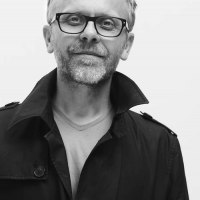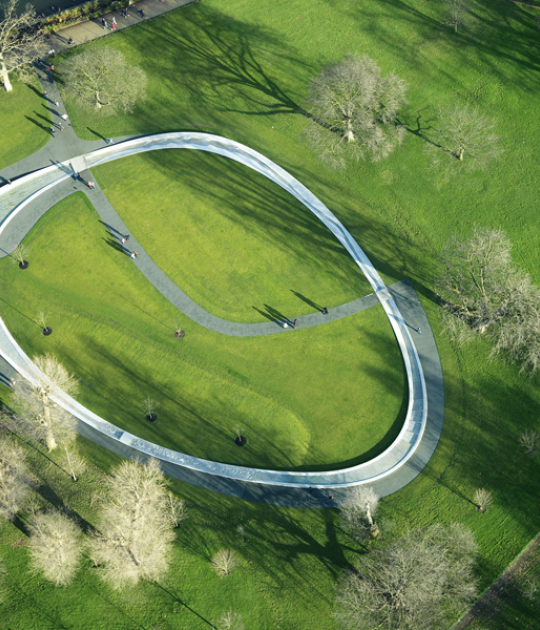Mirosław Nizio and his studio Nizio Design International envisage the building as a traditional hut that incrementally deteriorates and crumbles into dust – symbolising the burning of the village.
Miroslaw Nizio's studio won the competition for the design of the Mausoleum building in 2009. Nizio Design International is the general designer of the Mausoleum responsible for its site development and architectural and interior designs. Also, the studio was tasked to develop the design both in its conceptual and construction phases, as well as to supervise the works from start to finish.
The Mausoleum of the Martyrdom of Polish Villages was commissioned by the Kielce Region Countryside Museum with a view to commemorating the victims of the repressions suffered by Polish rural communities during the German occupation. Michniów – pacified on 12 July, 1943 – today is a symbol of all village pacifications that took place during World War II. The site on which the Mausoleum is being built used to be a symbolic place of remembrance dedicated to those tragic incidents: originally, a collective grave of the victims was erected (in 1945), followed by the "Pieta of Michniów” sculpture and National Remembrance House.
"The building has a characteristic segmented structure," said a statement from Nizio's studio. "Its tissue is cut across by cracks that divide the architectural form into closed and open parts."
Descripción realizada por Nizio Design International
The object's monolithic structure was designed in full applying the watertight concrete jointing and injection technology. The ferroconcrete pilasters that rise from the slab foundation come together at the roof ridge. They support the external envelope that serves both as the elevation and the insulation layer. In the walls and roof slopes the designers "hid" such elements as ventilation ducts, telecommunication and electrical infrastructure. The design created by Mirosław Nizio's studio envisaged that the visible surfaces of ferroconcrete elements would reproduce the structural features of wood. This effect was achieved by applying on the surface – using matrix impressions – a special thin-layer plaster for ferroconcrete structure repairs. Such impressions were applied on the roof slopes, inner walls, and side elevations.
The building has a characteristic segmented structure. Its tissue is cut across by cracks that divide the architectural form into closed and open parts. This form is the resultant of the sculptural inspirations and thinking of the architecture's consistency with the historical narrative. Also, it was informed by the need to adjust the building to the shape of its site featuring 10-15% slope of the ground. The subsequent closed and open segments – there are five of the former and six of the latter - lead the visitors through the exhibition that shows the history of the pacification and presents its subsequent stages and the process of escalating repression. In parallel to the narrative the building undergoes deformation and "destruction”, which symbolically conveys the annihilation that took place here. The gaps between the subsequent closed segments, the walls and the roof boast glass architectural features. The overall surface of the layout exceeds 16,200 sqm. The core exhibition of the projected museum will take 1,700 sqm, while temporary exhibitions will occupy 270 sqm.



































